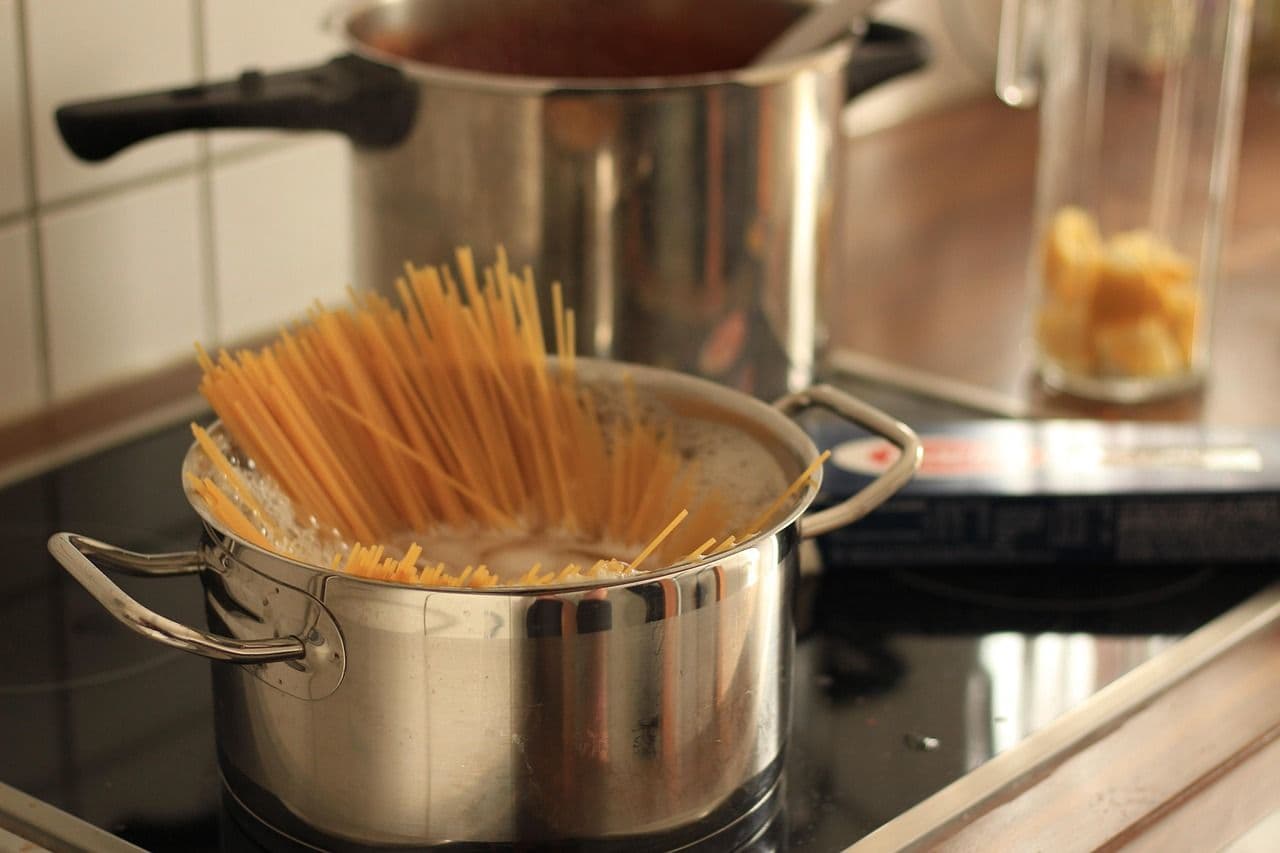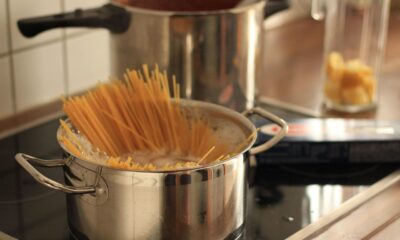Top Stories
Discover the Perfect Salt Ratio for Cooking Pasta

Cooking pasta may seem straightforward, but a recent study suggests that the amount of salt used can significantly affect both the flavor and texture of the dish. Researchers from the University of Lund found that adding approximately 7 grams of salt per liter of water—equivalent to about 1.25 teaspoons—is key to achieving an ideal pasta consistency.
Many people believe that a pinch of salt is sufficient, but Dr. Andrea Skoti, a senior lecturer in physical chemistry, emphasizes that the right amount of salt not only enhances taste but also influences the microstructure of the pasta. This understanding can transform the overall dining experience, making it more enjoyable.
The researchers conducted advanced analyses, employing techniques such as particle accelerators and neutron devices to observe how pasta changes internally during cooking. They discovered that the ideal cooking time for achieving perfect texture is around 10 minutes. Their findings were published in the scientific journal Food Hydrocolloids.
The Science Behind Salt’s Role in Cooking
Dr. Skoti explained that gluten in traditional pasta acts as a protective network that preserves starch during cooking. The study noted that the most significant structural damage occurs in gluten-free pasta cooked for 13 minutes in highly salted water. In contrast, conventional pasta demonstrated greater resilience and flexibility.
The implications of this research extend beyond culinary preferences. The team hopes that their findings will aid in the development of better and more durable gluten-free pasta alternatives, addressing a growing demand for such products.
Cooling Pasta: A Nutritional Boost
In addition to salt ratios, experts recommend allowing pasta to cool before consumption. Nutritionist Kevin David Rejl explains that cooling transforms starch molecules into resistant starch, which functions similarly to fiber. This type of starch is digested more slowly, providing a steady release of energy and helping to maintain stable blood sugar levels.
Rejl noted that this cooling technique is also employed by professional athletes, including football players, to sustain energy, enhance recovery, and better manage body weight. By implementing these simple adjustments in cooking methods, both home cooks and health-conscious individuals can improve their pasta dishes while reaping added nutritional benefits.
Overall, this research highlights the importance of understanding the science behind cooking techniques, encouraging both amateur and professional chefs to rethink their approach to pasta preparation.
-

 Entertainment2 months ago
Entertainment2 months agoAnn Ming Reflects on ITV’s ‘I Fought the Law’ Drama
-

 Entertainment3 months ago
Entertainment3 months agoKate Garraway Sells £2 Million Home Amid Financial Struggles
-

 Health2 months ago
Health2 months agoKatie Price Faces New Health Concerns After Cancer Symptoms Resurface
-

 Entertainment2 months ago
Entertainment2 months agoCoronation Street’s Carl Webster Faces Trouble with New Affairs
-

 Entertainment2 months ago
Entertainment2 months agoWhere is Tinder Swindler Simon Leviev? Latest Updates Revealed
-

 Entertainment3 months ago
Entertainment3 months agoKim Cattrall Posts Cryptic Message After HBO’s Sequel Cancellation
-

 Science4 weeks ago
Science4 weeks agoBrian Cox Addresses Claims of Alien Probe in 3I/ATLAS Discovery
-

 Entertainment2 months ago
Entertainment2 months agoOlivia Attwood Opens Up About Fallout with Former Best Friend
-

 Entertainment3 months ago
Entertainment3 months agoMarkiplier Addresses AI Controversy During Livestream Response
-

 Entertainment3 months ago
Entertainment3 months agoMasterChef Faces Turmoil as Tom Kerridge Withdraws from Hosting Role
-

 Entertainment4 months ago
Entertainment4 months agoSpeculation Surrounds Home and Away as Cast Departures Mount
-

 World2 months ago
World2 months agoCole Palmer’s Mysterious Message to Kobbie Mainoo Sparks Speculation










